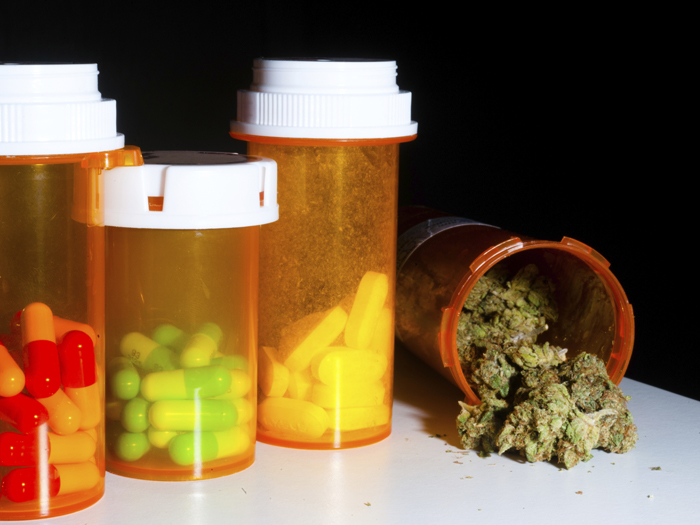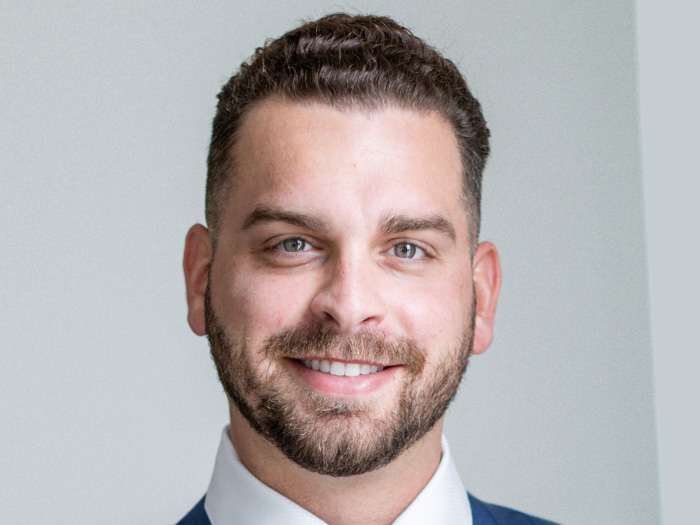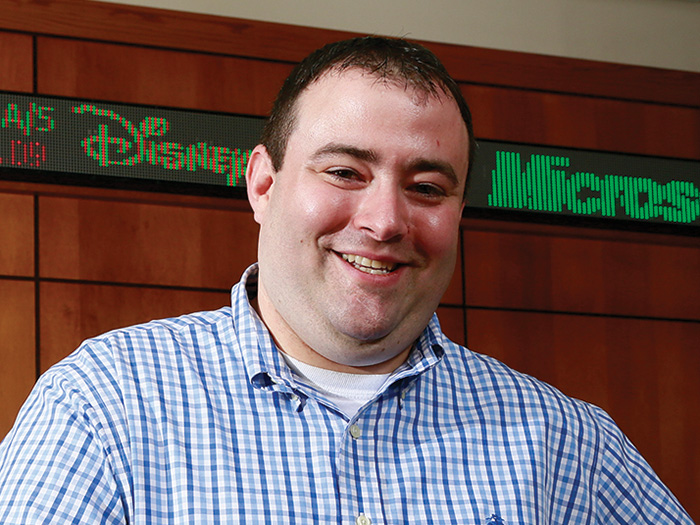5 Things People Get Wrong About Medical Marijuana in Workers’ Comp

There’s been lots of talk about medical marijuana as a safe alternative to opioids for the treatment of chronic pain, a common diagnosis among workers’ compensation patients. But according to medical experts, the discussion is fraught with imprecise language, lack of scientific evidence and conjecture.
“There’s no data to confirm this, but anecdotally the industry is seeing more requests for reimbursement for medical marijuana,” said Marcos Iglesias MD, MMM, FAAFP, FACOEM, Senior Vice President, Chief Medical Officer at Broadspire.
“But what I’m seeing is a tremendous lack of accurate knowledge. There are a lot of myths and misconceptions about marijuana, in general, and to me that’s the big concern. How should our industry be responding to these requests as they become more common?”
Iglesias laid about the five most pervasive misconceptions about marijuana in workers’ comp. Here are the notions payers should question as medical marijuana becomes a more widely accepted and requested form of treatment:
1. Medical marijuana is safer than recreational marijuana.
Medical marijuana is not fundamentally different from recreational marijuana. The distinction is one of semantics but has no practical implication for the uses or side effects of the drug.
“They are the same compound. Marijuana doesn’t know if it’s medical or recreational, or legal or illegal. It’s a substance,” Iglesias said. “The language is more of a legal or social construct, but not a medical one.”

Marcos Iglesias, senior vice president and chief medical officer, Broadspire
This misuse of language creates the false impression that medical marijuana is safer, more effective or more legitimate than recreational marijuana. There is no guarantee that those assumptions are accurate. Similarly, many believe that cannabidiol — or CBD — is safer than THC because it is not psychoactive and won’t give users a “high.”
“While it’s true that CBD doesn’t create the euphoric feeling that THC does, it still is a psychoactive compound. In fact, it’s touted as a treatment for anxiety and depression, which by definition would make it psychoactive,” Iglesias said. “It’s not a major misconception, but it underscores that we really don’t understand what we’re talking about when we talk about marijuana.”
2. Marijuana is an effective treatment for pain.
A 2017 study showed that marijuana is indeed effective at treating chronic pain, but there are caveats to those findings that the public frequently overlook. For one, marijuana was not proven effective for all types of chronic pain.
“That particular study looked only at chronic neuropathic pain. There are other types of chronic pain that are not addressed,” Iglesias said.
Even for neuropathic pain, the fact remains that opioids, antidepressants and antiepileptic drugs are more effective.
The other caveat is that pain was only reduced moderately. The study subjects were not ‘cured.’ Even for neuropathic pain, the fact remains that opioids, antidepressants and antiepileptic drugs are more effective.
“This doesn’t mean that marijuana is not effective and is not worth studying further, it just means that the evidence behind it as a treatment for chronic pain is tenuous. Today’s science does not allow us to make the broad pronouncements we’re making about the efficacy of marijuana,” Iglesias said.
3. Marijuana has no serious adverse effects.
While there have been no recorded marijuana overdose deaths, that does not mean that long-term use is without negative consequences.
“Cannabis use disorder, or addiction to marijuana, is very real,” Iglesias said. “A study published last year found that about 30 percent of frequent marijuana users are addicted, and as many as 12 percent of those people suffer severe symptoms.”
Those symptoms include the inability to function in any type of life role, meaning they cannot work, take on family responsibilities, or otherwise be a productive member of their communities.
Chronic users — whether for medical or recreational purposes — also pose a significant danger to those around them if they are impaired while driving or operating a piece of equipment.
Workplace safety is a top concern cited by risk managers regarding legalized marijuana.
Read more about why marijuana impairment testing must be made a priority in workers’ comp.
“They are expressing concern around how to protect their workers, and that naturally leads to questions about impairment testing. How can they determine if someone is impaired?” Iglesias said.
Currently, there is no test that can accurately determine if someone is impaired from marijuana use. Unlike with breath alcohol testing, there hasn’t been enough research done to determine a blood level of THC at which impairment can be safely presumed.
“With breath alcohol testing, we’ve got decades of evidence that shows that if you’re at 0.08, presumptively you’re impaired. We don’t have the data and the science in the marijuana realm. It’s going to take us a while to get there,” Iglesias said.
4. Marijuana is the answer to the opioid crisis.
In states that have legalized medical marijuana, studies have shown that increased marijuana use is correlated with reduced opioid overdose deaths.
“Several studies have confirmed this link, but we still can’t be sure of the cause and effect relationship,” Iglesias said. Additionally, the correlation seems to weaken with time. Opioid overdoses may noticeably drop initially after marijuana legalization but will slowly start to creep up again.
“There’s also other evidence that shows that individuals who use marijuana actually increase use of opioids and have higher incidence of opioid use disorder,” Iglesias said. “Again, the answer is not as clear cut as everybody wants it to be. I’m skeptical when people make pronouncements that this is going to solve as big a problem as we have with opioids.”
“We have a drug problem in this country. We have it with opioids, but we have it with other drugs as well.” – Marcos Iglesias, SVP & Chief Medical Officer, Broadspire
Narrowing the options down to marijuana and opioids, Iglesias said, is also a “false choice” because both have their side effects, and neither is very effective at treating chronic pain. Rather, medical providers should look more broadly at the alternatives available.
“We have a drug problem in this country. We have it with opioids, but we have it with other drugs as well. We also have a chronic pain problem, especially in workers’ comp,” Iglesias said.
“What has been shown to work most effectively in chronic pain are things like self-management of activity, sleep and stress. Acupuncture, massage, and sometimes physical therapy can help. The answer is not going to come in a neatly-packaged silver bullet. It’s going to be a number of interventions, but the foundation needs to be education. Training individuals to manage pain as opposed to trying to find a cure for pain.”
5. Medical marijuana is approved by the FDA and regulated like any other medication.
Despite limited evidence supporting its use as a pain treatment, medical marijuana still has not gone through the formal FDA approval process that other prescription medications are subject to. And there are no evidence-based guidelines detailing indications, dosage amounts or contraindications.
However, the FDA did approve last year a CBD extract available by prescription under the name Epidiolex.
“Epidiolex has the safeguards any other medication would have in terms of manufacturing process, quality control and FDA approval process. I think that lays out a great blueprint for studying and approving other similar products,” Iglesias said.
“I think that will get us away from what I see as the biggest problem that we’ve entered in as a society, which is doing medicine by referendum.” – Marcos Iglesias, SVP & Chief Medical Officer, Broadspire
“I think that will get us away from what I see as the biggest problem that we’ve entered in as a society, which is doing medicine by referendum. So, in states that have approved medical marijuana laws, it’s essentially because either the legislature or the public thinks that this drug should be used.
“I think that’s highly dangerous, because it’s allowing people without scientific knowledge to decide what’s safe and effective, and to skirt the mechanisms that we’ve instituted to safeguard the public.”
Epidiolex, however, signifies that the medical and pharmaceutical community can effectively research marijuana compounds to determine proper usage and dosing. As marijuana grows in popularity, more research will add to the bank of scientific evidence and more trials will likely be conducted to create more FDA-approved prescriptions.
“I do think that we’re going to find at least some beneficial effects of marijuana, but more importantly we’ll learn enough about it to be able to give safe and accurate recommendations,” Iglesias said. &










